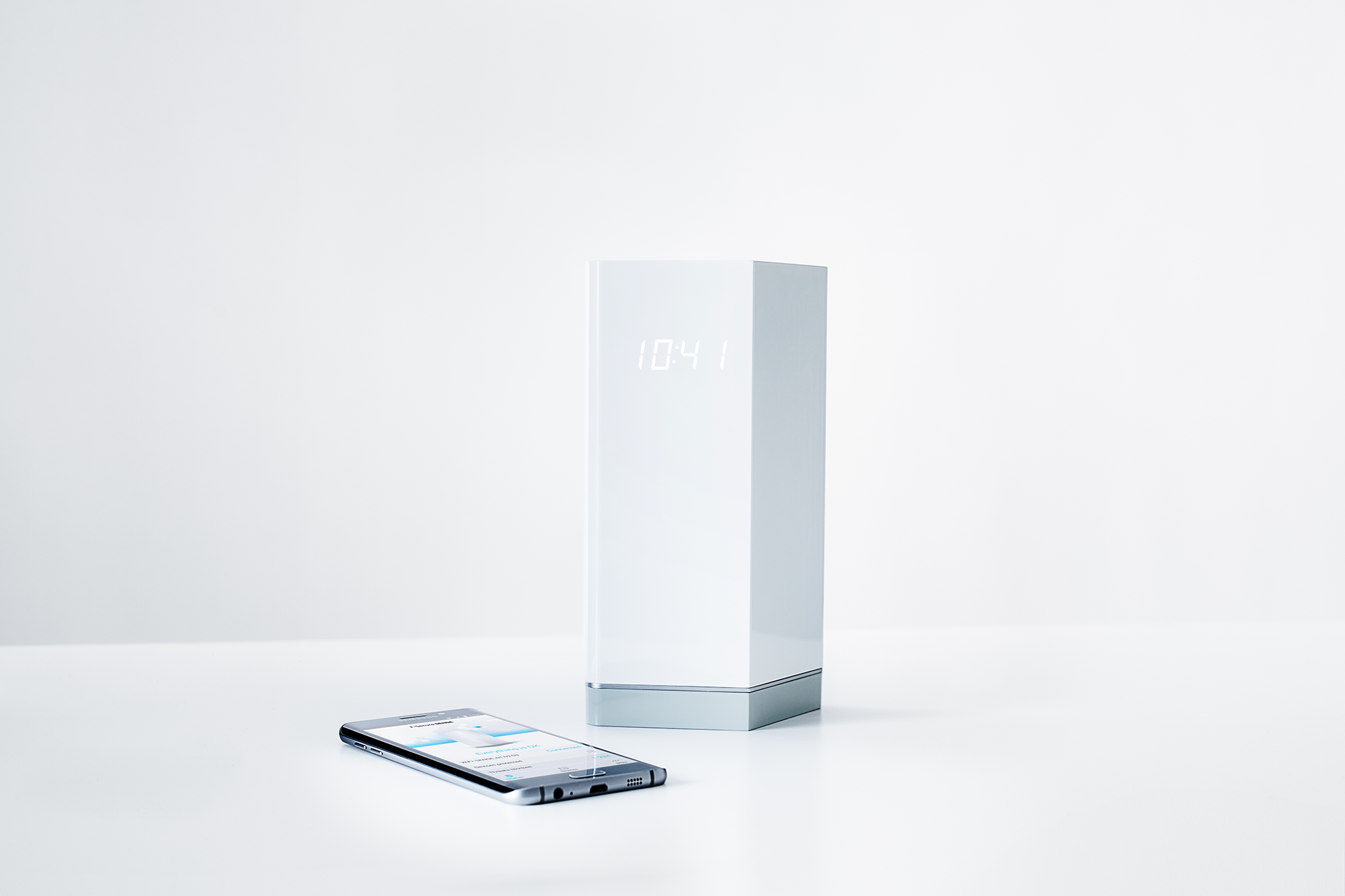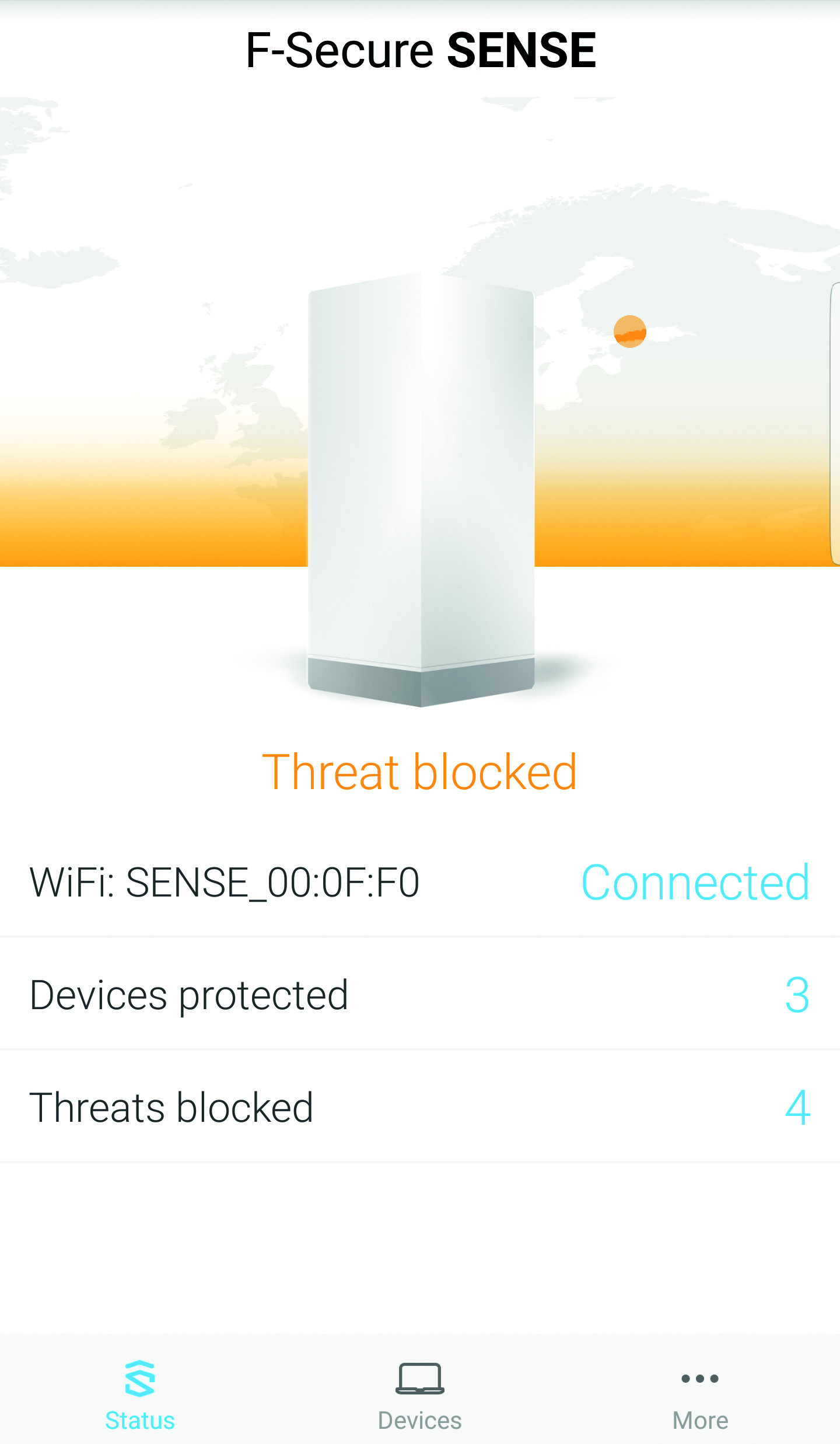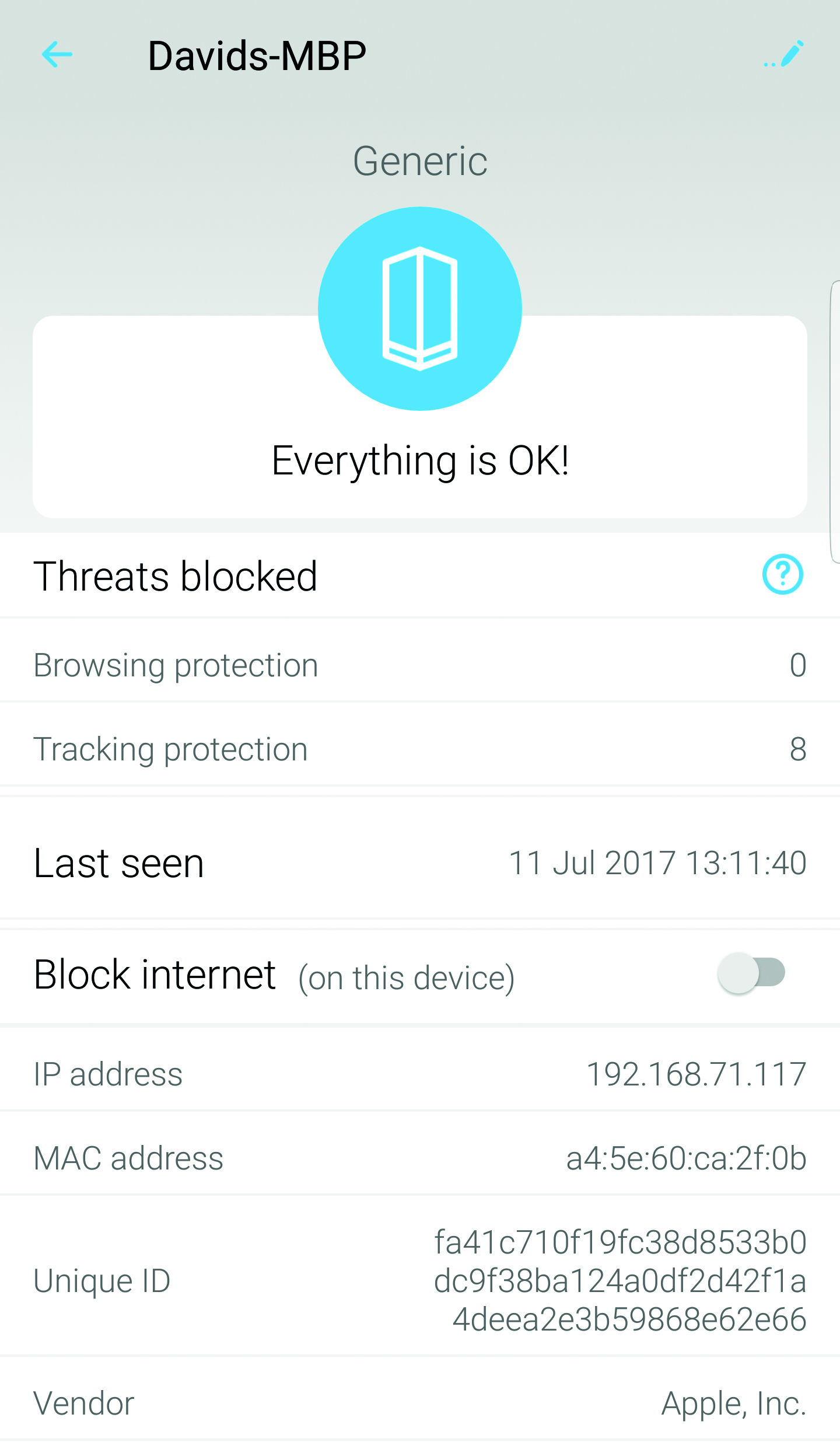F-Secure Sense review
Say goodbye to Mirai

A clever router that protects every device connected to your home network, but it's currently lacking a few features.
-
+
Strong security settings
-
-
Slightly disappointing speeds; Some features missing
It used to be that if you installed security software on your computer, you were protected. Not so anymore, as hackers aren't just after your computer, but any device you have connected to the internet, from smart TVs to security cameras.
Attacks on smart home devices are rather worrying and bound to increase. Last year, we saw the full threat when the Mirai botnet infected thousands of IoT devices and used in a distributed denial of service (DDoS) attack.
That is only the start of the problems, and an infected smart home device could open up your network to further attacks and issues.
Unfortunately, traditional routers aren't geared up to offer any protection from these kinds of attack, and can't and won't monitor your internet traffic for problems. Step forwards something different, the F-Secure Sense.
Sense is a combination of two products. First, there's the security-hardened router, which gives protection to all of your devices. It's a diamond-shaped glossy plastic box, and it looks fantastic. We love the clock that shines through the front. This can be dimmed or turned off, in case you have the router in a room where the bright lights would be a distraction.
Secondly, there's the Sense application, which uses F-Secure's anti-virus engine and protects your Android and Windows devices (there's an iOS app for setup only, while Macs currently aren't supported). It's powerful protection, protecting against 100% of threats in the most recent AV Test report.

Sense requires a yearly license (102 a year or 8.50 a month), with the first year included in the price of the router. This nets you all of the protection features, including software licenses for 25 Windows devices and unlimited Android devices.
F-Secure Sense is designed to be plugged into your existing wireless router. It will not work with a modem, such as the BT Openreach model, which is a real shame. Routers use a system called Network Address Translation (NAT), which lets you run many devices, each with their own internal IP address, through your internet's single IP address. By making you connect the Sense router to your existing router, you end up with a case of double-NAT (once on your existing router, and once on the Sense). This can make things like port forwarding much harder, as you have to configure the settings on both routers.
In some situations, this will not work at all, particularly for games and TV services. In fact, our BT YouView service wouldn't work with streamed channels, such as BT Sport. The only way around the issue is to plug certain devices into your existing router. We'd like to see F-Secure update the Sense router, giving a PPoE option so that it can connect to most UK broadband providers.
A second slight disappointment is that the Sense has just three Gigabit Ethernet ports. Having one port fewer than most routers could be a problem to some: we had to plug in an additional switch to connect all of our devices.
Once you've connected the Sense to your existing router, setup is managed through the Sense app for Android or iOS. Only one smartphone can control the router at a time, so make sure you use your primary phone. If you want to change phones later, you will have to reset the router and start again. If possible, we suggest using iOS, as the Android app can't currently configure Port Forwarding, which is a strange omission; support is coming soon.

As this is a secure router, the Sense configuration is a little different to that of most regular routers. First, you have to pair your controlling smartphone with the router. This is done via Bluetooth, and requires you to enter the four-digit code displayed on the router into your app.
After that, you're taken through a quick wizard to configure your wireless network name and password. Secure defaults are suggested, but we recommend disabling Wi-Fi on your old router and then configuring the Sense to use the same Wi-Fi name as your old router, so all of your existing devices connect.
One minor issue is that the Sense's DHCP server uses a new IP address range (192.168.71.30 to 192.168.71.249). If you've got devices that use static IP addresses you have two options. First, you can change their address to match the new range. Secondly, you can change your old router to use a different IP address range (you'll have a conflict, otherwise), and reconfigure the Sense router to use your old DHCP IP address range. Either way, it's a bit of a faff.
Finally, if you keep the Sense's default settings, you may find that some devices don't work. This is most likely because they've held onto to their old IP addresses. Rebooting them should fix the problem.
Security protection is very easy to manage, using toggle switches in the app. By default, the router is set to protect all devices, with browsing protection turned on. In this mode, Sense actively blocks malicious websites on all devices, reducing the risk of phishing attacks or drive-by malware installations. It works well, too, blocking all of our attempts to visit malicious sites. This isn't true web filtering, though, so you'll need parental controls if you want to filter what your children can see. A future update will add Advanced parental controls into the mix.
Get the ITPro daily newsletter
Sign up today and you will receive a free copy of our Future Focus 2025 report - the leading guidance on AI, cybersecurity and other IT challenges as per 700+ senior executives
-
 Global cybersecurity spending is set to rise 12% in 2025 – here are the industries ramping up investment
Global cybersecurity spending is set to rise 12% in 2025 – here are the industries ramping up investmentNews Global cybersecurity spending is expected to surge this year, fueled by escalating state-sponsored threats and the rise of generative AI, according to new analysis from IDC.
By Ross Kelly Published
-
 ‘Phishing kits are a force multiplier': Cheap cyber crime kits can be bought on the dark web for less than $25 – and experts warn it’s lowering the barrier of entry for amateur hackers
‘Phishing kits are a force multiplier': Cheap cyber crime kits can be bought on the dark web for less than $25 – and experts warn it’s lowering the barrier of entry for amateur hackersNews Research from NordVPN shows phishing kits are now widely available on the dark web and via messaging apps like Telegram, and are often selling for less than $25.
By Emma Woollacott Published
-
 Redis unveils new tools for developers working on AI applications
Redis unveils new tools for developers working on AI applicationsNews Redis has announced new tools aimed at making it easier for AI developers to build applications and optimize large language model (LLM) outputs.
By Ross Kelly Published